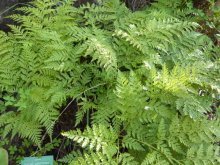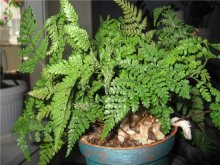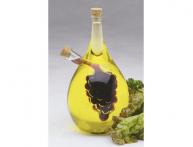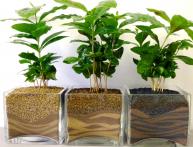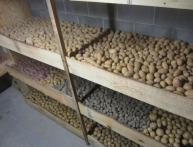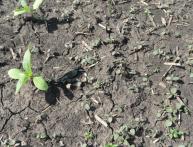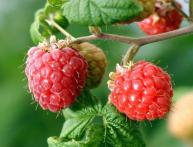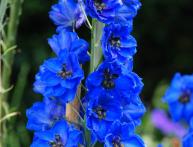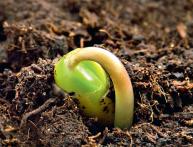Features of davallia, growing and propagation conditions
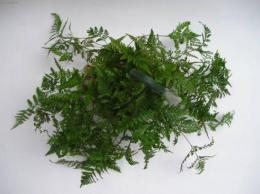
Davallia is a decorative epiphytic fern, it belongs to the Davalliev family. Under natural conditions, it can be found on the Canary Islands, on the island of Java, in Polynesia, Japan, China: mainly in the countries of tropical Asia.
Content:
What is davalliya and what does it look like?
There are more than 40 in the family various types, some of them are grown at home as an ampel plant, they can also be found in greenhouses, grown indoors.
People often call davallia “squirrel’s” or “hare’s” feet, sometimes “deer’s foot”. This applies to the most common species - Davallia canariana. The main distinguishing feature of davallia is that its hairy, fluffy rhizomes, brown or silver in color, are very thick; they do not grow in height, but hang over the edge of the pot. The leaves of dawllia are small but bright.
Flower growers grow only compact species:
- Bulat
- Marissa
- Canary
- The exception is a large but hardy species for our conditions - Figinsis
Davallia is a herbaceous plant, its rhizome is thick, scaly, and fluffy near the base. Due to its increased creeping ability, it quickly grows over the substrate.
If growing occurs in a greenhouse or at home, heating must be provided year-round, since the plant is evergreen.The best conditions are partial shade and a moist substrate and air, but good drainage must be ensured.
The substrate for davallia should consist of peat, sphagnum and coarse peka for drainage. Propagated by division of rhizomes or spores, like any other fern. Davallia grows slowly, the maximum length of each frond is 30 cm, the plant does not bloom. As for each type separately, we can highlight the following.
Davallia Canariana naturally lives in Spain, North Africa and, of course, the Canary Islands. The length of the fronds reaches 45 cm, each of them is triangular in shape, the structure is leathery, feathery. When grown in a pot, the rhizome will hang over its entire diameter.
Davallia Marisa is slightly smaller in size, the length of the fronds is on average 20 cm. The plant is winter-hardy, but will develop better in a cold greenhouse. Each frond is triangular and pinnate. The rhizome is covered with brown scales, which can intertwine with each other, forming unusual patterns.
Fern care

Caring for dawllia is not much different from caring for many other indoor plants. It does not require any special conditions, but those that exist must be carefully fulfilled. The dallalia fern loves bright, but diffused light; it will grow best on a windowsill on the east side of the house. Bright, open sun will harm the plant just as much as shade. Natural lighting can be replaced with artificial lighting.
Watering also does not impose impossible conditions. Dawllia should be watered rarely, but abundantly. In summer, water is added once a week; the water should be soft and at room temperature. If the weather is hot and the soil dries out quickly, then water needs to be added more often.
In winter, the plant is watered less often; one watering every two to three weeks is enough, the main thing is to not allow the earthen clod to dry out completely. Before the next watering, the soil should be dry to a maximum of 5 cm. There is no need to additionally moisten the dalliya fronds, but if water accidentally gets on them, it’s not a big deal.
Davallias apply fertilizers, but do not make any special demands. Feeding is carried out from March to September 2 times a month. Fertilizer is taken for ornamental plants and diluted in low concentration. Occasionally, the fern can be washed to remove dust and dirt.
Davallia gets along well in dry conditions, but it will be better if the air humidity reaches 60%. In hot weather, the fronds can be lightly sprayed, and wet expanded clay can be placed in the tray. The room temperature should be up to 25 degrees in summer, and at least 13 degrees in winter. If it is too cold, the leaves of the dawllia will begin to die.
For ferns, it is important to prepare a good substrate; it should consist of 50% peat and 50% leaf mixture. If the substrate was purchased in a store, then you need to add perlite, pine bark and sphagnum to it, and drainage is placed at the bottom of the pot. The soil must be loose and well-drained, otherwise the growth of the fern will stop and it will get sick.
While the davallia is young, it is replanted every year; when the plant becomes mature, it is enough to replant it once every 3 years, when the roots fill the pot.
Plant propagation
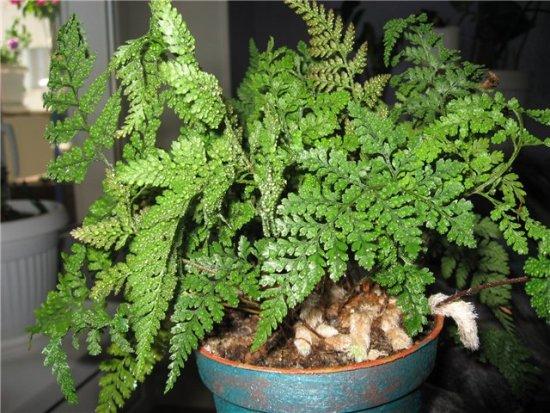
All ferns reproduce in two ways: by dividing the bush and by spores. The first option is better suited for dawllia, it tolerates it easily, and besides, planting will be beneficial.
The procedure is very simple: the bush is cut, the cuts are treated with charcoal, and the resulting new bushes are planted shallowly in separate pots. If you need to get as many small ones as possible from one plant, then the dawllia is completely removed from the pot and cut into pieces of 7 cm, each piece must contain at least one leaf.
Next, these segments are placed in a pot. One end needs to be deepened into the ground, and the side with the growth part is left outside; the sprout can be secured with wire.
Reproduction by spores takes a long time; not all spores give rise to a new plant and survive. But it’s impossible not to mention this method; it may be suitable for some. All spores are united into sori. When they are completely ripe, they need to be shaken off the vines and sent to dry in a dark place.
Then the spores are transferred to a bowl, where a loose, moist substrate is prepared for them. Peat with the addition of chopped sphagnum is well suited for spores; the peat must first be doused with boiling water or heated in the microwave for sterilization.
Next, the bowl is covered with glass and placed on the windowsill. After about a month, the spores will begin to germinate, provided that the room temperature was 20-25 degrees. As a result, moss-like growths will appear. They continue to be kept under glass and sprayed, and after about 2 months they will have germ cells that fuse in a humid environment. When fertilization occurs, the young plants can be planted.
Ferns do not immediately get used to dry air, so they are first kept in a container with a closed lid and gradually adapted to new conditions.
Dallalia fern may be subject to the following diseases and parasites:
- Shchitovka
- Pain mite
- Mealybug
- Aphid
- Trips
- Fern aphid
- Fungal infections
If you provide the fern with good conditions and proper care, then it will not be afraid of the above problems. Despite the fact that fern came to us from hot countries, it gets along well in our climate. Davallia is used as an ornamental plant, planted in hanging baskets.
Admire dalliya in the video:
Interesting information about the vegetable garden

